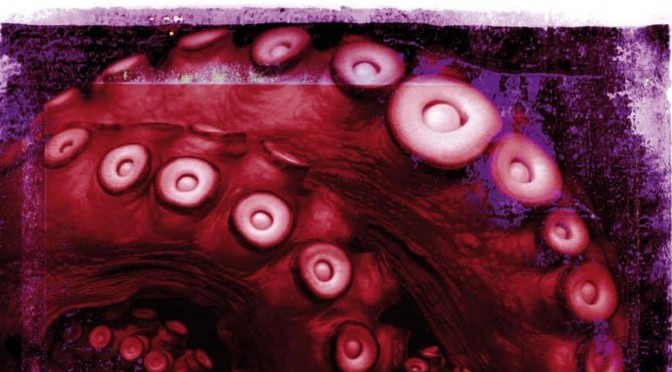By Robert-Jan Wille
In 2010 a new novel by China Miéville was published with the thrilling title Kraken. Miéville is a writer of “weird fiction” whose novels try to move fantasy from the age of Tolkien to the age of steam punk and beyond. The book is a clear example of this. The main character of Kraken is a twenty-first century curator of the British Museum of Natural History who succeeds in losing a very large specimen of the giant squid Architeuthis dux, a theft that turns out to be the result of a war between different occult sects. Among them is a gang of squid ‘cultists’ who look upon the ‘Kraken’ as their god and who consider a nineteenth century natural historian from Denmark, Johan Japetus Steenstrup as their main apostle.
I will not go into the story into detail but will move on to the fact that Johan Japetus Steenstrup really existed. Those who are able to read Scandinavian languages I refer to his wikipedia site in Danish. It is a typical mid-nineteenth century man working at the university doing both laboratory and museum research. He was the one who gave the giant squid his scientific name.
What interested me was that I came across a publication of a Dutch zoologist Pieter Harting at the same time that I was reading the novel. It was an article called ‘Description de quelques fragments de deux cephalopodes gigantiques’, in the Verhandelingen der Koninklijke Akademie van Wetenschappen, 1861. This publication is still used nowadays as a most helpful reference for those who want to study the giant squid or more specifically, its type. Later researchers also suggested a species called Architeuthis hartingii.
Pieter Harting was at the time director of the zoological museum of the university of Utrecht. He had been an expert in microscopical anatomy and botanical physiology and also wrote on chemistry and geology. He had been a professor at Utrecht university since 1843, teaching students in medicine how to use the microscope. However, only after 1858 he secured a chair in a specific ‘discipline’: zoology. With this chair came the directorship of the university’s zoological cabinet.
From the 1860s onwards he integrated his microscopical observatory into the zoological cabinet and created a ‘zootomic laboratory’. An important aim of this laboratory was the education-motivated research of marine invertebrates. Marine invertebrates like molluscs and protozoans were key groups for researchers who not only wanted to fill out the gaps in taxonomy but who also were toying with all kinds of affinities between the species. Many took from Ovid the idea of life being born in the sea: ‘vidi factas ex aequore terras’.
For example, Lamarck, Geoffroy, Milne-Edwards, Darwin and Haeckel were all nineteenth century experts in specific groups of marine invertebrates. Like Darwin and Haeckel, Harting accepted the idea of a genealogical relationship between all species of plants and animals.
I wonder what Harting thought when he first started to dissect the remains of a giant squid, used as he was to do microscopical research of plant cells, slices of human tissue and small amounts of soil. Did he think ‘what on earth am I doing know?’ Or did he have a plan?
To be continued…



